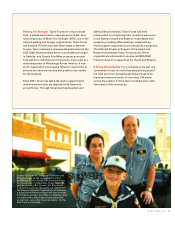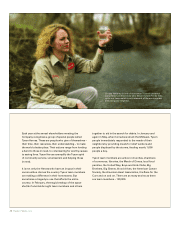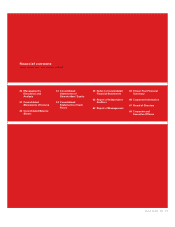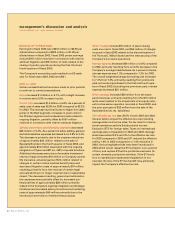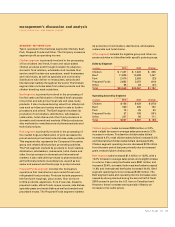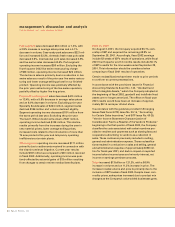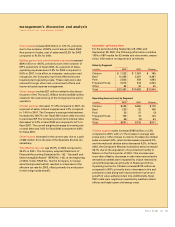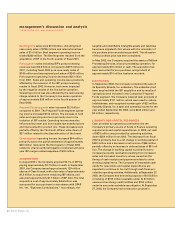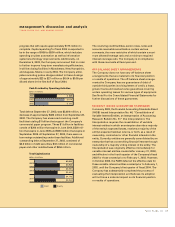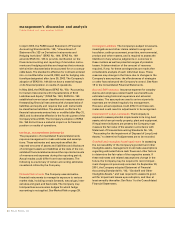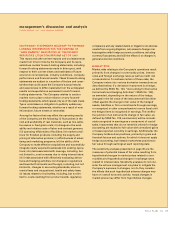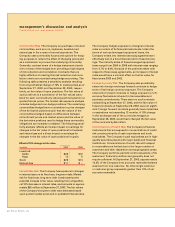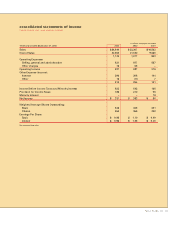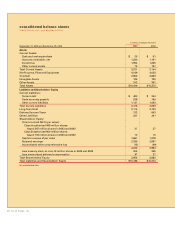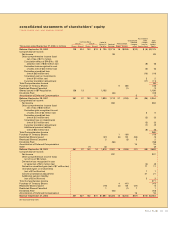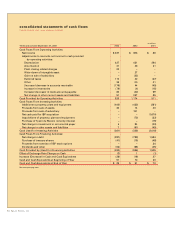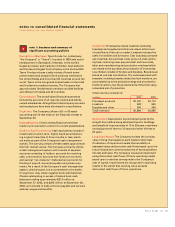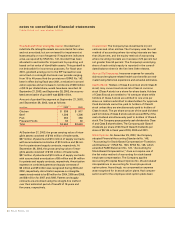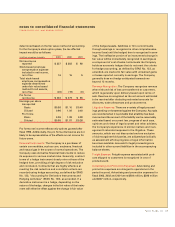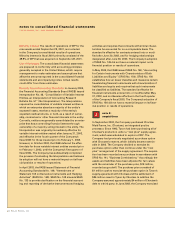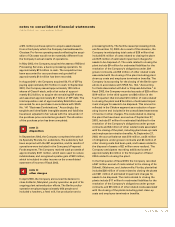Tyson Foods 2003 Annual Report Download - page 31
Download and view the complete annual report
Please find page 31 of the 2003 Tyson Foods annual report below. You can navigate through the pages in the report by either clicking on the pages listed below, or by using the keyword search tool below to find specific information within the annual report.
Tyson Foods, Inc. 29
management’s discussion and analysis
TYSON FOODS, INC. 2003 ANNUAL REPORT
CAUTIONARY STATEMENTS RELEVANT TO FORWARD-
LOOKING INFORMATION FOR THE PURPOSE OF
“SAFE HARBOR” PROVISIONS OF THE PRIVATE
SECURITIES LITIGATION REFORM ACT OF 1995
This report and other written reports and oral statements
made from time to time by the Company and its repre-
sentatives contain forward-looking statements, including
forward-looking statements made in this report, with
respect to their current views and estimates of future
economic circumstances, industry conditions, company
performance and financial results. These forward-looking
statements are subject to a number of factors and uncer-
tainties that could cause the Company’s actual results
and experiences to differ materially from the anticipated
results and expectations expressed in such forward-
looking statements. The Company wishes to caution
readers not to place undue reliance on any forward-
looking statements, which speak only as of the date made.
Tyson undertakes no obligation to publicly update any
forward-looking statements, whether as a result of new
information, future events or otherwise.
Among the factors that may affect the operating results
of the Company are the following: (i) fluctuations in the
cost and availability of raw materials, such as live cattle,
live swine or feed grain costs; (ii) changes in the avail-
ability and relative costs of labor and contract growers;
(iii) operating efficiencies of facilities; (iv) market condi-
tions for finished products, including the supply and
pricing of alternative proteins; (v) effectiveness of adver-
tising and marketing programs; (vi) the ability of the
Company to make effective acquisitions and successfully
integrate newly acquired businesses into existing opera-
tions; (vii) risks associated with leverage, including, but
not limited to, cost increases due to rising interest rates;
(viii) risks associated with effectively evaluating deriva-
tives and hedging activities; (ix) changes in regulations
and laws (both domestic and foreign), including, but not
limited to, changes in accounting standards, environ-
mental laws and occupational, health and safety laws;
(x) issues related to food safety, including, but not lim-
ited to, costs resulting from product recalls, regulatory
compliance and any related claims or litigation; (xi) adverse
results from ongoing litigation; (xii) access to foreign mar-
kets together with foreign economic conditions, including
currency fluctuations; and (xiii) the effect of, or changes in,
general economic conditions.
MARKET RISK
Market risks relating to the Company’s operations result
primarily from changes in commodity prices, interest
rates and foreign exchange rates as well as credit risk
concentrations. To address certain of these risks, the
Company enters into various derivative transactions as
described below. If a derivative instrument is a hedge,
as defined by SFAS No. 133, “Accounting for Derivative
Instruments and Hedging Activities” (SFAS No. 133),
as amended, depending on the nature of the hedge,
changes in the fair value of the instrument will be either
offset against the change in fair value of the hedged
assets, liabilities or firm commitments through earnings,
or recognized in other comprehensive income (loss) until
the hedged item is recognized in earnings. The ineffec-
tive portion of an instrument’s change in fair value, as
defined by SFAS No. 133, as amended, will be immedi-
ately recognized in earnings as a component of cost of
sales. Instruments that do not meet the criteria for hedge
accounting are marked to fair value with unrealized gains
or losses reported currently in earnings. Additionally, the
Company holds certain positions, primarily in grain and
livestock futures and options, for which it does not apply
hedge accounting, but instead marks these positions to
fair value through earnings at each reporting date.
The sensitivity analyses presented on page 30 are the
measures of potential losses of fair value resulting from
hypothetical changes in market prices related to com-
modities and hypothetical changes in exchange rates
related to interest rates. Sensitivity analyses do not con-
sider the actions management may take to mitigate the
Company’s exposure to changes, nor do they consider
the effects that such hypothetical adverse changes may
have on overall economic activity. Actual changes in
market prices may differ from hypothetical changes.


